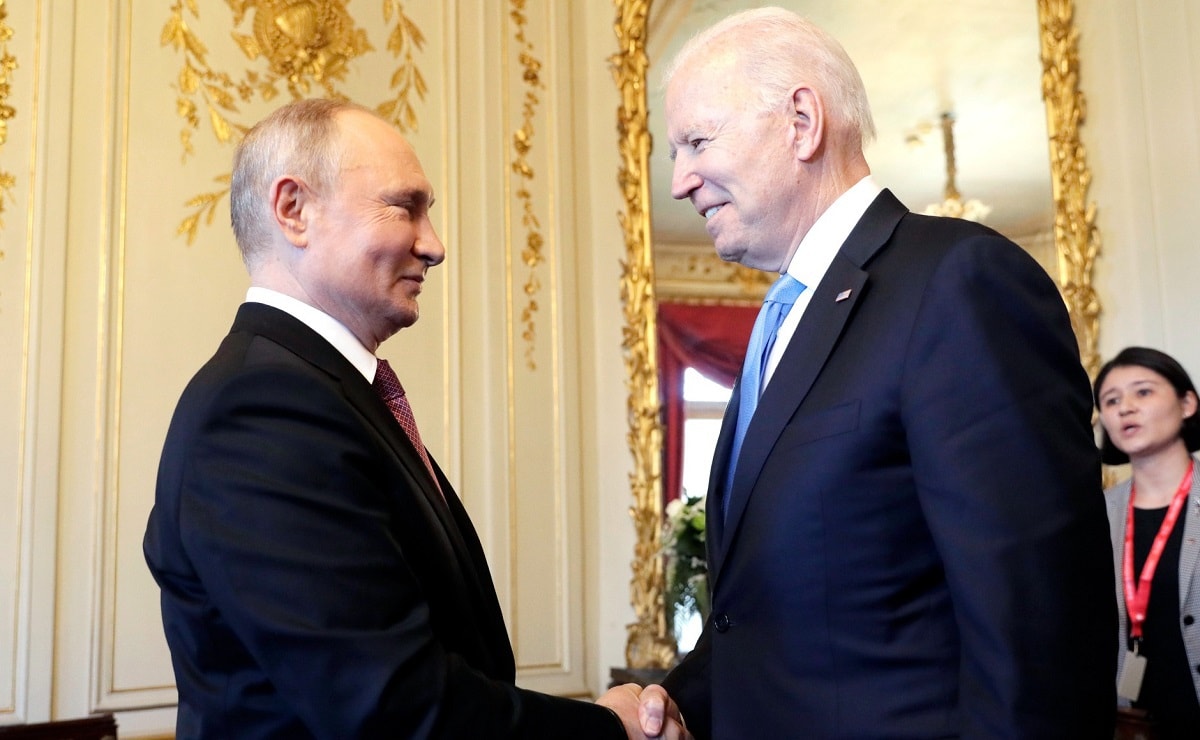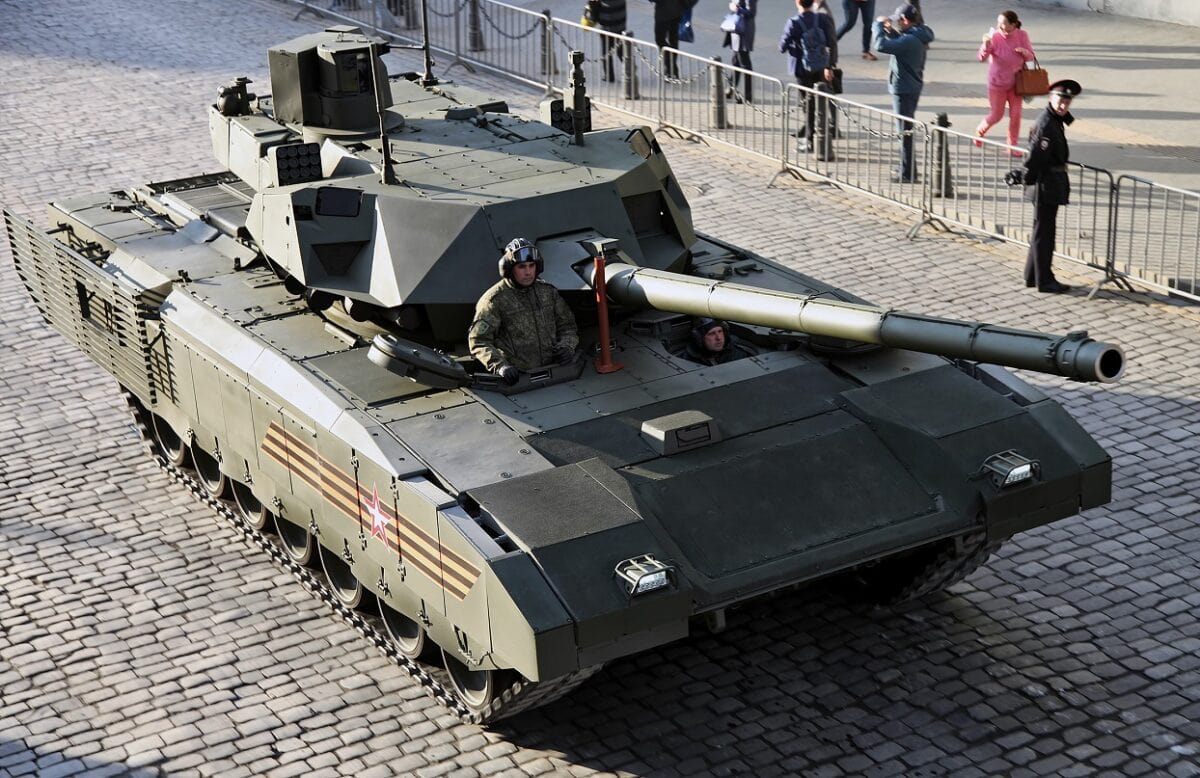Putin’s Hybrid War along NATO’s Eastern Flank: In an April 2014 interview with Russian media at a time when the war in Eastern Ukraine was gathering speed, Vladimir Putin introduced a concept that effectively transformed that crisis into a classic case of irredentism threatening the stability of Europe as a whole. In doing so he set the framework for the coming years of strategic competition between Russia and the United States and its NATO allies. Speaking on Russian TV that day Putin invoked the historic concept of “Novorossiya” – a reference to a swath of territory conquered by the Romanovs in the 18th century from the imploding Ottoman Empire. The message was clear: this was the lens through which he saw the region’s geopolitics. (Two centuries ago, Novorossiya covered about thirty percent of today’s post-Cold War Ukrainian territory, including Crimea.) Putin’s “Novorossiya Plus” is now front and center amid the current Russian military buildup along Ukraine’s borders to say nothing of the hybrid attacks launched from Belarus against Latvia, Lithuania, and especially Poland, with migrants funneled from Belarus to break NATO’s Eastern parameter.
Russia Goal: A Sphere of Influence
Clearly, we are in the second, possibly decisive, chapter of the Ukrainian crisis that will determine that country’s future and, by extension the balance of power in Europe. Putin no longer bothers to equivocate when it comes to relations with the West going forward. He is determined to compel Europe to revisit the spheres of influence formula, with Russia gaining in the process a key vote on the Continent’s security and economic issues going forward.
Russia’s military buildup along Ukraine’s borders, already about one hundred seventy-five thousand strong and counting, is Putin’s unequivocal message to the United States and its European allies that Moscow is determined to use all political, economic, and military means at its disposal to carve out an undisputed sphere of influence reconstituted around the Eastern Slavic core of the former Russian empire. In this design, the Russian Federation – understood as the home of the Great Russians – will control and/or directly incorporate the White Russians (Belarusians) and the Little Russians (Ukrainians). For Putin, this neo-imperial domain will serve as the unquestioned sphere of Russian domination, with the rest of Europe transformed into a space where Moscow’s interests and priorities must be always considered. In this design, the United States and its allies would have to accept that NATO would never enlarge further East. Putin seems certain that crosscurrents within NATO and differences among the allies when it comes to such fundamentals as energy policy and rearmament have created an opportunity for him to play hardball and succeed. He seems certain that geopolitics and geoeconomics, in Europe and worldwide, have presently aligned in Russia’s favor.
The last three post-Cold War decades were an unprecedented era of peace, stability, and growth in Central Europe, bringing about a rapid modernization of the Baltic-to-the-Black-Sea corridor. These changes were facilitated by two interrelated phenomena post-1991: first, the physical expulsion of Russian military power from the region; second, the attendant anchoring of post-communist Europe in the transatlantic security system. The first condition was the sine qua non of this transformation, i.e., thirty years ago for the first time since 1945 Russia, lost the capacity to compete for influence in Europe. The enlargement of NATO and the follow-on extension of the European Union to the East proved transformational, for they put paid to the fear that those states would find themselves in a “grey zone,” a post-Soviet “no-man’s-land” of Zwischeneuropa that would breed instability and conflict.
Russia’s Use of State Power in Europe
Putin decided already in 2004 to set aside talk of cooperating with the West. Instead, he put in place policies aimed and returning Russia to European politics, not in any institutional sense but through the direct application of state power. The two cycles of Russian military modernization completed against the backdrop of a rapidly disarming Europe eager to cash in on the “end of history” have skewed the balance in key defense capabilities along the Eastern flank in Russia’s favor. Putin’s decision in 2008 to push Russian troops into Abkhazia and South Ossetia, severing these provinces from Georgia, and then in 2014 to seize Crimea from Ukraine followed by an irredentist war for the country’s Eastern provinces have effectively shut down further NATO enlargement to the East. Inviting these countries to join the alliance would in effect mean that NATO members would be asked to vote for going to war with Russia. It is telling as to how confident Putin has been of late that the West will concede to his spheres of influence demand that, even though NATO membership for Georgia and Ukraine has been all but foreclosed through previous direct Russian military action, he now demands the West to publicly acknowledge his win.

Image from Russia-US Summit. : Russian Presidential Administration Website.
Russia has “re-entered” European politics not only through the exercise of military power. The country has also adroitly used the energy weapon, leveraging its vast natural gas resources in the context of the European Union’s decision to move to “clean energy.” Notwithstanding ongoing debates in the EU over whether nuclear power qualifies as a clean energy source, natural gas has been widely accepted as such and treated as a gateway to renewables. Here the Russian-German Nord Stream 1 and Nord Stream 2 pipelines have put Moscow in a unique position to become the largest supplier of energy to Europe, in the process making Germany into the largest distributor of Russian gas. Today, regardless of how the European Union evolves – whether it continues as a confederation of sovereign European states or shifts towards federalism – once the second pipe becomes fully operational, Moscow’s direct engagement with Berlin on energy will give Putin a strong hand in European politics going forward.
The Timing of Putin’s Strategy
As military pressure along Ukraine’s borders builds, Putin seems to have concluded that the time is finally ripe to cut through the gordian knot that has been the continued existence of a pro-Western Ukraine in the seven years since the initial invasion of Donetsk and Luhansk. For the US and its allies, the question is understandably first and foremost about whether Russian forces will crash through Ukraine’s borders yet again, as this raises the specter of a large-scale Russian-Ukrainian war that might pull others into it. Nevertheless, regardless of whether near-term Putin decides to move militarily into Ukraine or not, the key threat to European security is his primary goal of returning Russia to European politics as a great power, able to shape and influence the intra-European relationships and the overall transatlantic dynamic at will. Putin is betting that the United States, coming off two decades of an inconclusive Global War on Terror (America’s uncoordinated withdrawal from Afghanistan has been read in Moscow as a sign of US waning military competence) is not ready to respond decisively to his challenge in Europe. At least not until its Joint Force has been restructured away from CT operations and reformatted, retrained, and re-fitted for high-end great power state-on-state competition. He sees the lingering strains in transatlantic relations playing out in Russia’s favor. He also sees Brexit still rippling across the European Union as a moment of opportunity. Now that a quintessentially maritime power has departed, the bloc is more Continental and more “German” than at any time since the seventies. The Biden administration’s decision to drop the remaining sanctions on Nord Stream 2 was interpreted in Moscow that Washington has prioritized its relationship with Berlin, underscoring for Putin that his great power bilateralism is the way to go.
Much of how this Ukrainian crisis unfolds and whether it will or will not transform European politics and security rests on decisions taken by Germany’s new government. The Merkel government relied on a combination of political and economic means to manage its relationship with Moscow, eschewing all-out German rearmament. Olaf Scholz, the new Chancellor, spoke last summer of the need for a new Willy Brandt-style Ostpolitik towards Russia, emphasizing Berlin’s demand that Moscow adheres to the rules-based international order. It is too early to judge what Germany’s Russia policy will look like, and how effective it will be at reducing risks. Still, what makes the current situation different from the Brandt era is that during the Cold War Germany was negotiating from a position of military strength. Today, should Berlin recommit to providing the Bundeswehr with real exercised capabilities, it would send an unequivocal message that it is in fact ready to add military power to its Russian policy toolbox – something Berlin has thus far showed itself reluctant to do.

Russian T-14 Tank. Image: Creative Commons.
What Happens Next and the Stakes
As the Ukrainian crisis continues to unfold, one should bear in mind at all times that Putin’s overarching objective is not only to regather the old Russian Eastern Slavic imperial core but most importantly to compel the West to recognize de facto if not de jure Moscow’s sphere of influence in Eastern Europe. This is the underlying message in Putin’s demand that NATO rescinds its 2008 pledge to admit Georgia and Ukraine into the alliance. If he gets his wish, this will have reversed the gains made by the West in the wake of the unification of Germany. Russia will dominate once again the region outside NATO’s Eastern flank (in the aftermath of Putin’s subjugation of Ukraine and de facto incorporation of Belarus into the Russian Federation, Moldova would likely lose its sovereignty as well). In effect, Europe would find itself back in a neo-imperial sphere of influence paradigm with potentially devastating consequences for NATO and allied solidarity. Last but not least, if NATO allows Putin to get away with this gamble, Moscow’s next step is likely to be pressuring the Baltic states, Poland and Romania, with the goal of breeding instability within NATO’s perimeter.
Andrew A. Michta is the dean of the College of International and Security Studies at the George C. Marshall European Center for Security Studies and a new Contributing Editor for 1945. He is the former Professor of National Security Affairs at the US Naval War College and former Senior Fellow at the Center for European Policy Analysis. You can follow him on Twitter: @AndrewMichta. The opinions expressed here are those of the author and do not reflect the official policy or position of the George C. Marshall European Center for Security Studies, the U.S. Department of Defense, or the U.S. government.

